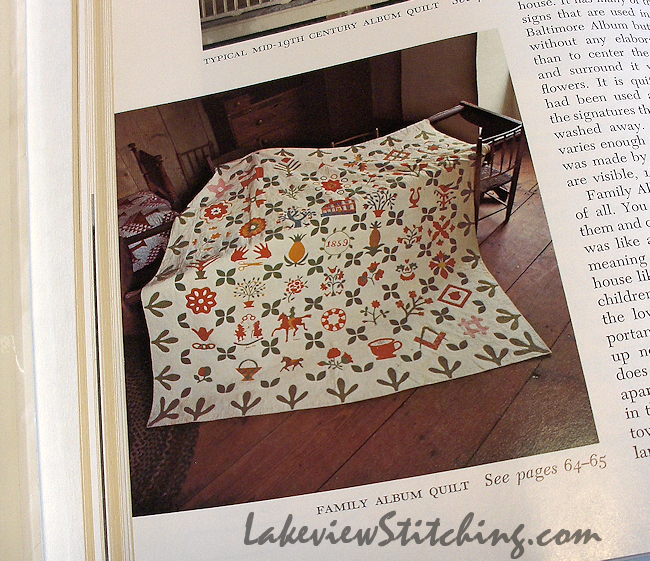In Part 1 of Ink Week, I inadvertently created a splotchy pattern with the Cerulean Blue Tsukineko ink in the border of two of my birdhouse blocks for Leanne Beasley's Down in the Garden stitchery quilt. In the end, I liked those ones the best, so I thought I would do the same technique to fill in the watering cans in four of the other blocks.
However, I learned that the Cool Gray ink behaves rather differently! The blue ink really moves out the edges of the brushstroke, while the grey seems to even itself out. In the photo above, the splotches have almost vanished.
I also learned that the ink tends to settle to the bottom of the cup over time. This was actually helpful, because you end up with more pigment at the tip of the brush, which then pushes out the edge of the brushstroke. So the last piece I did came out splotchier, as you can see in the photo I took while it was still wet:
But, once it dried, the edges of the strokes still blended out:
Which is fine! It still has that watercolour feel to it. You will also notice that for these blocks I decided that it would be better to have a thin white edge along the line, than to let the ink go over. It will be interesting to see how it looks once the lines are stitched!
Until this point all the inks were used straight out of the bottle. The colours for the leaves and flowers, though, are all mixed from two or more inks.
Here's my Day 2 test sheet:
After finishing all the grey parts, I started to mix the colours:
- I began with drops of the pure, undiluted ink. This is the orange,
- And this is the pure yellow,
- And this is the Banana Cream that I used for the birdhouses.
- The pure yellow is very harsh and a little greenish, and my goal was a softer, yellow orange. I started by mixing the pure yellow with a couple drops of pure orange. Nice colour!
- But, when diluted, the orange almost vanished and it went back to bright yellow. You can see I tried various levels of orange and water to fine tune the mix.
- I thought I had the colour right here, but it still turned out to be too saturated, and not as transparent as I wanted.
- This is the final mix that I used on all the blocks. In the photo below you can see that the ink looked a lot oranger in the mixing cup than it did on the fabric.
- Next up were the greens. Now that I knew how much the colour changed with the addition of water, I looked at that first. This one is the pure lime green ink on the right, and the diluted lime green on the left. You can also see that the lime ink in the bottle is really a mix of pigments, and that the blue pigments once again moved closer to the edges of the drops, leaving the yellow in the centre.
- The emerald green ink was really surprising! On the left is the pure ink, and on the right is the diluted ink, which turned almost turquoise!
- In the end I used three different greens for the quilt. This one is a diluted combination of the lime and emerald. It still felt a little artificial to me,
- So I added a couple drops of the orange to brown it down. This is the mix I used for all the leaves.
There are also diluted lime, and a lemon-lime mix in some of the flower centres. Here's that yellow orange from #7:
I still have the centres of the yellow flowers, and the three other flowers to do, which will amount to four separate sessions with a dry in between each one. I'd like to do it in one day, but it may end up being two more. I'm past the "white knuckle" stage though, and it's starting to be fun! You can already see the blocks coming to life:





















































